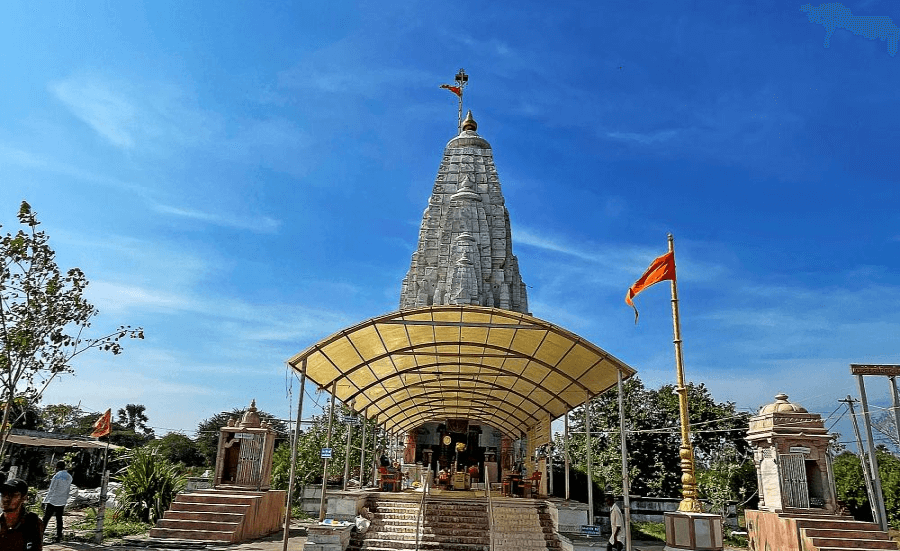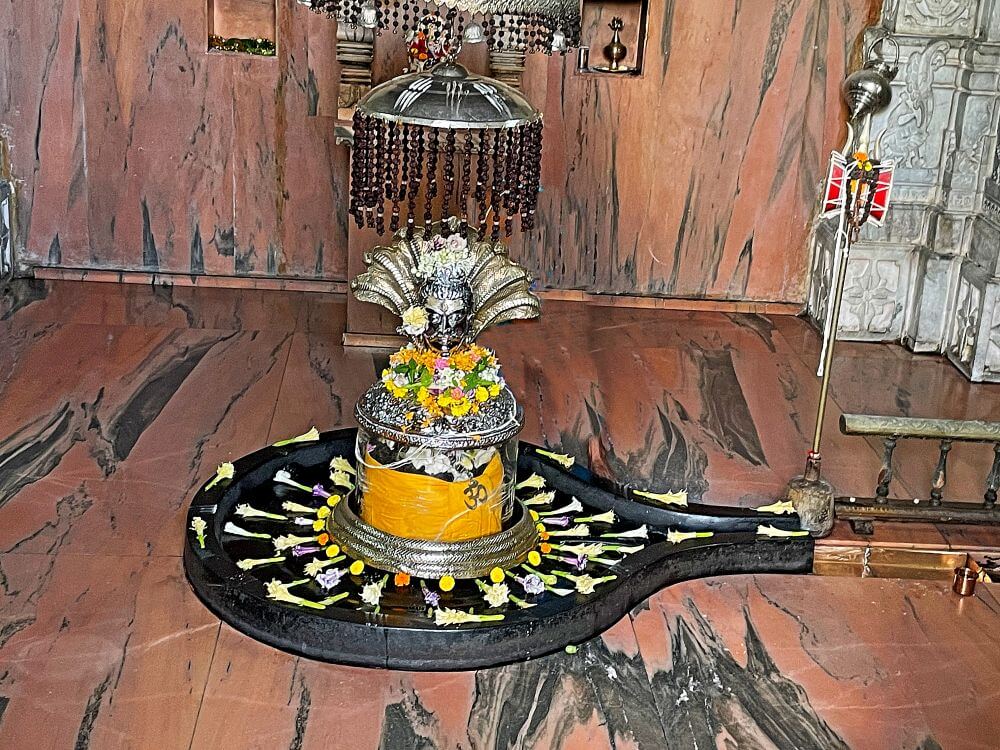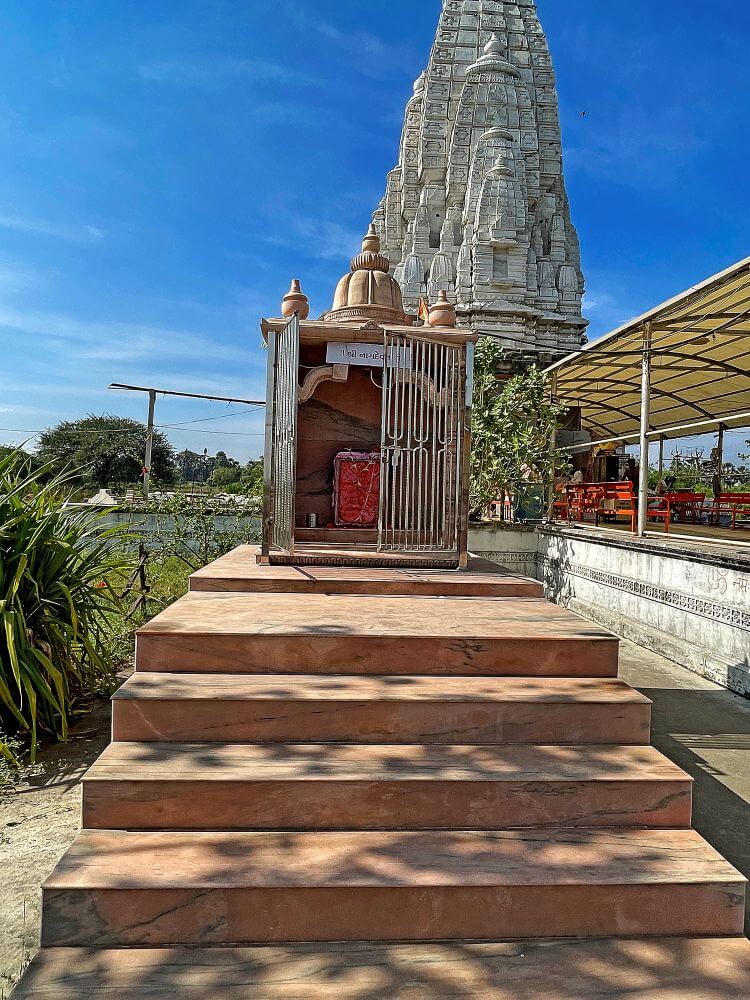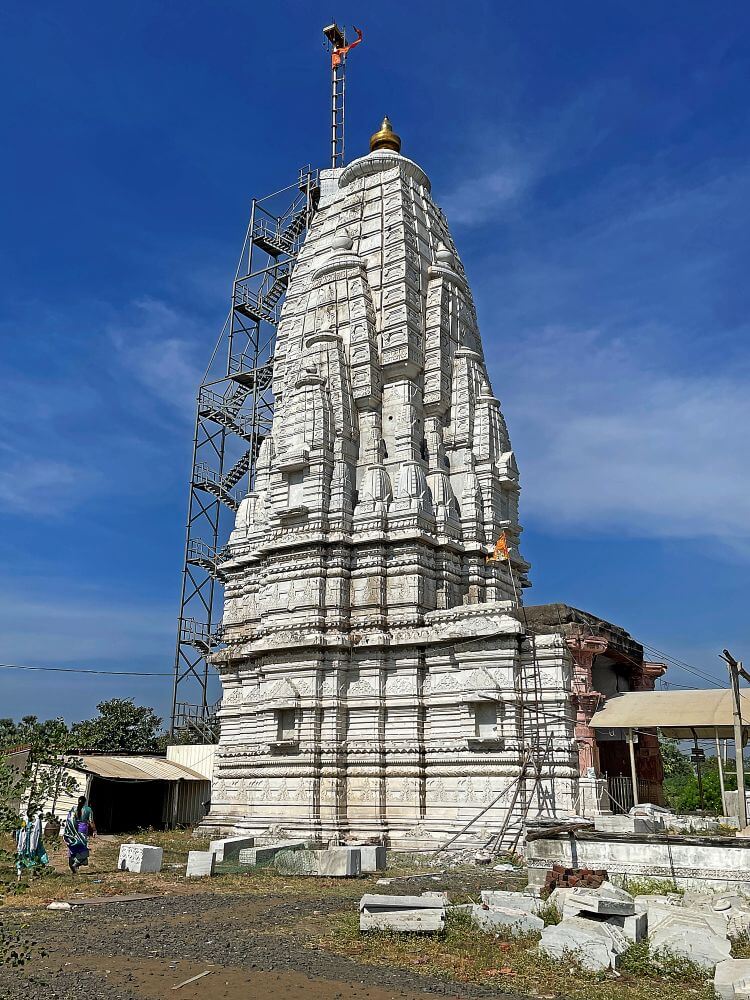
 The Steneshwar Mahadev Temple in Tenagam, Surat, is an ancient and significant temple linked to the Samudra Manthan (churning of the ocean) from Hindu mythology. It is believed that this location was where the pot of nectar (Amrit) was stolen by demons and later consumed by the Gods. The temple’s name derives from the Sanskrit word ‘Stena’, meaning thief. In the 16th chapter of the Yajurveda, there is a reference to “Stenanam Pataye Namo Namo,” which translates to “Salutations to the Lord of Thieves.” At Steneshwar Mahadev Temple, this reference ties directly to the mythological story of the theft of the Amrit Kalash (pot of nectar), further emphasising the temple’s spiritual significance. The temple houses a unique Trilinga Shivlinga, representing Brahma, Vishnu, and Mahesh, and is revered as an embodiment of Lord Dattatreya.
The Steneshwar Mahadev Temple in Tenagam, Surat, is an ancient and significant temple linked to the Samudra Manthan (churning of the ocean) from Hindu mythology. It is believed that this location was where the pot of nectar (Amrit) was stolen by demons and later consumed by the Gods. The temple’s name derives from the Sanskrit word ‘Stena’, meaning thief. In the 16th chapter of the Yajurveda, there is a reference to “Stenanam Pataye Namo Namo,” which translates to “Salutations to the Lord of Thieves.” At Steneshwar Mahadev Temple, this reference ties directly to the mythological story of the theft of the Amrit Kalash (pot of nectar), further emphasising the temple’s spiritual significance. The temple houses a unique Trilinga Shivlinga, representing Brahma, Vishnu, and Mahesh, and is revered as an embodiment of Lord Dattatreya.
 The Skanda Purana and the Tapi Mahatmya chronicle the legends of this site. According to one story, when the Gods and demons churned the ocean to obtain nectar, Dhanvantari, the divine physician, emerged holding the pot of Amrit. Dhanvantari suggested that the nectar be consumed at a sacred site. The Gods approached Brahma, who recommended the confluence of the Tapi River and the sea, at this location. While the Gods prepared to bathe, demons disguised as sages stole the pot. Alarmed, the Gods sought Lord Shiva’s help. Vishnu assumed the form of Mohini, a celestial enchantress, to distract the demons. Seizing the opportunity, the gods consumed the nectar, following which a Shivlinga was consecrated here.
The Skanda Purana and the Tapi Mahatmya chronicle the legends of this site. According to one story, when the Gods and demons churned the ocean to obtain nectar, Dhanvantari, the divine physician, emerged holding the pot of Amrit. Dhanvantari suggested that the nectar be consumed at a sacred site. The Gods approached Brahma, who recommended the confluence of the Tapi River and the sea, at this location. While the Gods prepared to bathe, demons disguised as sages stole the pot. Alarmed, the Gods sought Lord Shiva’s help. Vishnu assumed the form of Mohini, a celestial enchantress, to distract the demons. Seizing the opportunity, the gods consumed the nectar, following which a Shivlinga was consecrated here.
In the Tapi Mahatmya, another story about the Steneshwar Mahadev temple is recounted. Lomesh Rishi, who resided on the banks of the Tapi River, once desired to listen to music. He requested Vishvavasu, a celestial Gandharva (divine musician), to sing for him. However, Vishvavasu deliberately sang off-key, causing the sage to become enraged. In his anger, Lomesh Rishi cursed Vishvavasu, saying, ‘You shall turn into a lump of flesh and fall to the ground.’ Terrified by the curse, Vishvavasu pleaded for forgiveness. Moved by his remorse, Lomesh Rishi softened the curse, saying, ‘You will be redeemed when you visit the Steneshwar Tirtha and have darshan (sacred sight) of the deity.’
 Subsequently, Vishvavasu, in his cursed form as a lump of flesh, arrived at the Steneshwar Tirtha. There, his curse was lifted, and he was restored to his original form. This story highlights the sanctity and redemptive power of the Steneshwar Mahadev temple, reinforcing the belief that visiting this site grants liberation from sins and fulfilment of desires.
Subsequently, Vishvavasu, in his cursed form as a lump of flesh, arrived at the Steneshwar Tirtha. There, his curse was lifted, and he was restored to his original form. This story highlights the sanctity and redemptive power of the Steneshwar Mahadev temple, reinforcing the belief that visiting this site grants liberation from sins and fulfilment of desires.
Over the centuries, the temple has undergone several renovations and now stands amidst lush green fields. The site is also believed to house celestial trees such as Kalpavriksha and Parijata, associated with the 14 treasures (Ratnas) obtained during Samudra Manthan.
The Steneshwar Mahadev Temple boasts a tall spire and an expansive, open courtyard paved with paver blocks. A prominent golden flagstaff stands on an octagonal platform to the temple’s right, alongside a small shrine dedicated to Dhanvantari, whose idol depicts him holding the nectar pot, a conch, a flower, and a scripture. A shrine to Nagdevata (serpent deity) is located to the left.
The temple features a spacious pavilion with a marble Nandi idol on a raised platform and a tortoise statue in front. The sanctum entrance is crafted from marble, with a lintel depicting Lord Ganesha and intricately carved arches. Inside the sanctum, the Trilinga Shivlinga, representing Brahma, Vishnu, and Mahesh, is adorned with a silver mask and sheltered by a silver canopy supported by a serpent. A steady stream of water flows onto the Shivlinga through a copper vessel suspended above. Behind the Shivlinga, a marble idol of Goddess Parvati graces the sanctum wall.
A steady stream of water flows onto the Shivlinga through a copper vessel suspended above. Behind the Shivlinga, a marble idol of Goddess Parvati graces the sanctum wall.
The Shivlinga is decorated with flowers three times daily, and special darshan is offered at 7:00 AM and 7:00 PM, accompanied by evening illumination that enhances the temple’s beauty. The temple hosts various religious events year-round, including a grand yajna on Mahashivratri and special programmes on the temple’s anniversary during Margashirsha Shuddha Ekadashi.
According to the Tapi Mahatmya, visiting this sacred site absolves devotees of their sins and grants longevity and prosperity. Many believe that offering prayers at Steneshwar Mahadev fulfils all desires. This belief draws thousands of devotees from far and wide.



